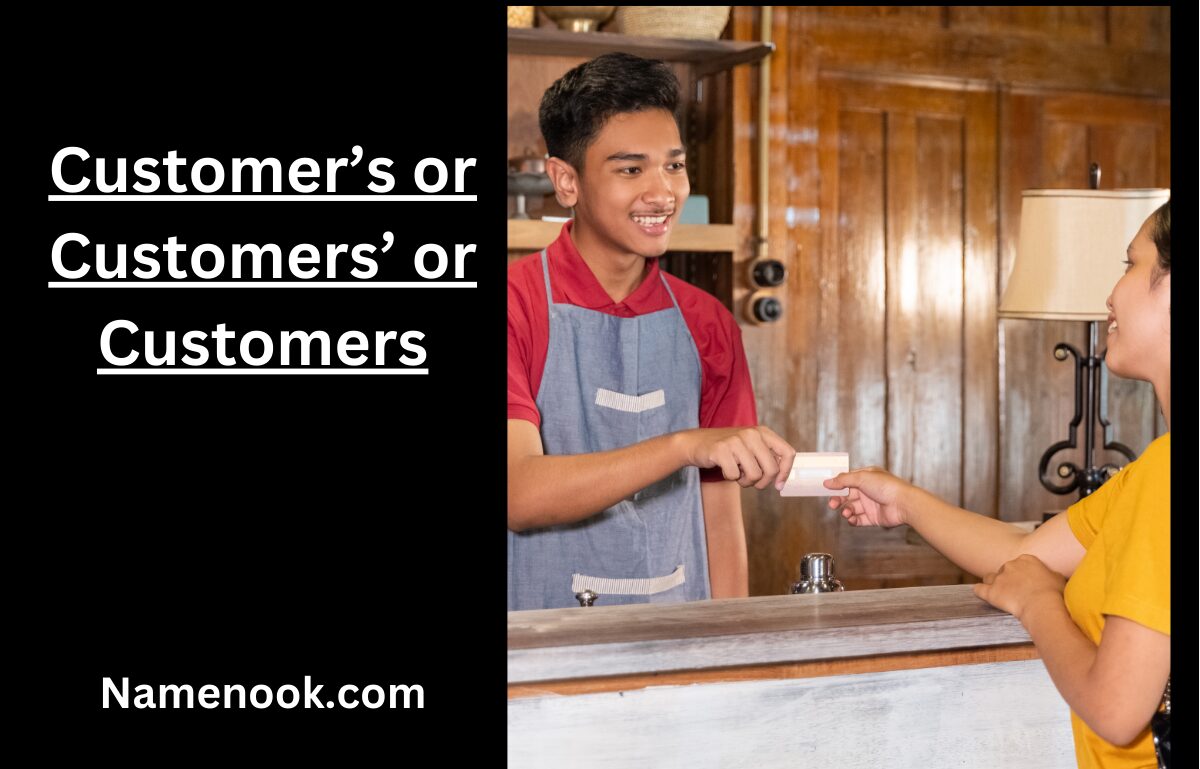Mastering Possessive Forms: A Business Professional’s Guide to Flawless Communication
Struggling with Customer’s vs Customers’ vs Customers? Learn the difference with easy examples and master English possessives!
In the world of business, every word carries weight. Whether you’re drafting an email, crafting marketing copy, or updating your website, grammatical precision can make or break your professional image. One of the most common—yet frequently misused—grammatical elements is the possessive form.
Misplaced apostrophes, confusing singular and plural possessives, and unclear ownership references can lead to misunderstandings, undermine credibility, and even damage customer relationships. This guide will break down the correct usage of customer, customers, customer’s, and customers’, ensuring your business communications are always polished and professional.
Why Possessive Forms Matter in Business
Before diving into the rules, let’s understand why this matters:
-
Professionalism – Proper grammar signals attention to detail.
-
Clarity – Misused possessives can create confusion.
-
Trust – Customers and clients judge credibility based on communication.
A single misplaced apostrophe might seem minor, but in business, perception is everything.
Understanding the Basics: Singular vs. Plural Possessives
1. Customer (Singular, No Possession)
-
Refers to one individual purchasing goods or services.
-
Example:
-
“The customer requested a refund.”
-
2. Customers (Plural, No Possession)
-
Refers to multiple individuals.
-
Example:
-
“Customers appreciate fast delivery.”
-
3. Customer’s (Singular Possessive)
-
Shows ownership by one customer.
-
Example:
-
“The customer’s feedback was valuable.” (One person’s opinion.)
-
4. Customers’ (Plural Possessive)
-
Shows ownership by multiple customers.
-
Example:
-
“The customers’ reviews were overwhelmingly positive.” (Many people’s opinions.)
-
Real-World Business Examples
Customer Service Scenarios
✅ “The customer’s complaint was resolved within 24 hours.” (One person’s issue.)
✅ “We addressed all customers’ concerns in the meeting.” (Multiple people’s concerns.)
Marketing & Branding
✅ “Our customer’s journey is our top priority.” (Individual experience.)
✅ “We value our customers’ loyalty.” (Collective appreciation.)
Website & Policy Writing
✅ “The return policy protects the customer’s rights.” (One person’s rights.)
✅ “The terms and conditions reflect customers’ preferences.” (Group preferences.)
Common Mistakes (And How to Fix Them)
Mistake #1: Misplacing the Apostrophe
❌ “The companys policy is strict.”
✅ “The company’s policy is strict.”
Quick Fix: If something belongs to someone, add ’s (for singular) or s’ (for plural).
Mistake #2: Confusing Plural vs. Possessive
❌ “We read all the customers comments.”
✅ “We read all the customers’ comments.”
Test: Replace with “comments of the customers”—if it makes sense, use the possessive.
Mistake #3: Its vs. It’s
❌ “Its important to listen to customer’s needs.”
✅ “It’s important to listen to customers’ needs.”
Rule:
-
Its = Possessive (like his, hers).
-
It’s = Contraction for “it is.”
Why Businesses Can’t Afford Grammatical Errors
A 2023 survey found that:
-
58% of consumers distrust brands with poor grammar.
-
72% are more likely to trust businesses with error-free communication.
-
46% would hesitate to make a purchase after spotting typos.
Case Study: A major e-commerce brand saw a 15% drop in conversions after customers noticed repeated grammatical mistakes in product descriptions. After revising the content with proper possessives and punctuation, engagement improved significantly.
Pro Tips for Perfect Possessives
1. The “Of The” Test
If you can rephrase with “of the,” use a possessive.
-
“The feedback of the customer” → “The customer’s feedback.”
2. Pluralize First, Then Add Possessive
-
One customer → customer’s
-
Multiple customers → customers’
3. Watch Out for Irregular Plurals
-
“The children’s toys” (Not “childrens’”)
-
“The people’s choice” (Not “peoples’”)
Interactive Exercise: Fix These Sentences
Test your knowledge by correcting these common errors:
-
“The employees break room is being renovated.”
-
✅ “The employees’ break room is being renovated.”
-
-
“We analyzed the clients feedback.”
-
✅ “We analyzed the client’s feedback.” (If one client)
-
✅ “We analyzed the clients’ feedback.” (If multiple clients)
-
-
“Its crucial to respect a customers privacy.”
-
✅ “It’s crucial to respect a customer’s privacy.”
-
Final Takeaways for Business Professionals
-
Singular possessive = ’s (customer’s order)
-
Plural possessive = s’ (customers’ orders)
-
Proofread carefully—apostrophe errors are easily overlooked.
-
When in doubt, use the “of the” test to check ownership.
Conclusion
Grammar isn’t just about rules—it’s about clear, credible, and professional communication. Whether you’re writing an email, a social media post, or a company policy, mastering possessives ensures your message is received as intended.
By applying these principles, you’ll:
✔ Enhance professionalism
✔ Avoid misunderstandings
✔ Build stronger customer trust
Remember: In business, the little details make the biggest difference. Take the time to get them right.

